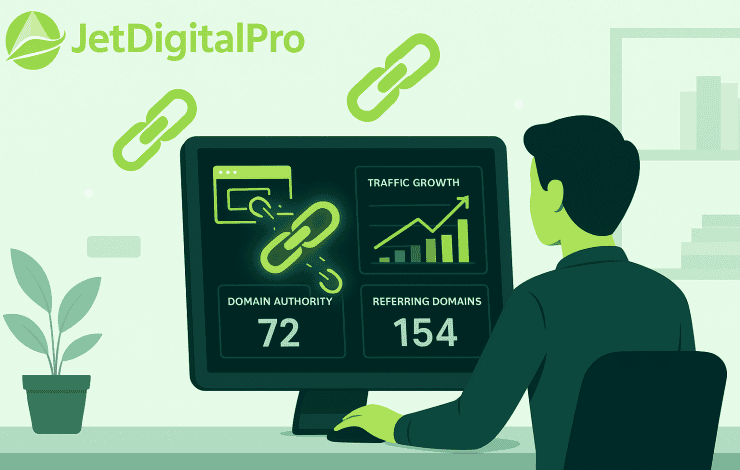In today’s fast-paced business environment, service performance has emerged as a crucial measure of brand success. Brands are no longer judged solely on their products or pricing, rather, customers increasingly evaluate them based on the quality of service they receive.
Metrics like Customer Satisfaction (CSAT) and Net Promoter Score (NPS) have become essential tools for understanding customer experiences and driving brand loyalty. This shift reflects a deeper understanding of the emotional connections customers form with brands, making service performance a key indicator of long-term success.
Key Takeaway
- Service performance metrics directly influence customer satisfaction and loyalty. (1)
- Exceptional customer service can lead to increased revenue and brand advocacy.
- Tracking service interactions allows brands to enhance their reputation and differentiate themselves in the market.
The Shift in Brand Evaluation
In the past, brands often relied on traditional metrics such as sales figures and market share to gauge their success. However, as consumer expectations have evolved, so too have the criteria for brand evaluation. Today, service performance metrics have taken center stage. Customers expect not only quality products but also seamless service interactions that enhance their overall experience.
For instance, a customer might choose to remain loyal to a brand that resolves their issues quickly and effectively, even if a competitor offers a similar product at a lower price. This shift emphasizes the importance of service quality in building brand loyalty. The modern consumer is more likely to share their experiences, both positive and negative, on social media, making service performance a critical factor in shaping brand reputation.
Understanding Service Performance Metrics
To effectively measure service performance, brands must focus on several key metrics that provide insights into customer experiences. These include:
- Customer Satisfaction (CSAT): This metric gauges how satisfied customers are with a specific interaction or overall experience. High CSAT scores indicate that customers feel valued and appreciated. (2)
- Net Promoter Score (NPS): NPS measures the likelihood of customers recommending a brand to others. A high NPS indicates strong brand loyalty and advocacy, which can lead to organic growth.
- Customer Effort Score (CES): This metric assesses how easy it is for customers to interact with a brand. Lower effort scores typically correlate with higher satisfaction and loyalty.
- First Response Time (FRT): The speed at which a brand responds to customer inquiries is crucial. A quick response can significantly enhance the customer experience and foster loyalty.
By tracking these metrics, brands can gain valuable insights into customer expectations and preferences, allowing them to make data-driven decisions that enhance service quality.
The Emotional Connection
Service performance is not just about efficiency, it also encompasses the emotional aspects of customer interactions. Brands that prioritize service excellence often create stronger emotional connections with their customers. This connection can lead to increased customer loyalty and advocacy.
For example, a customer who receives exceptional service after a complaint may feel a sense of loyalty to the brand, even if they initially had a negative experience. This emotional bond can be a powerful driver of brand success, as customers are more likely to return and recommend the brand to others.
The Role of Technology in Service Performance
Advancements in technology have revolutionized the way brands approach service performance. Real-time service monitoring and analytics enable companies to track customer interactions and identify areas for improvement. With tools like customer feedback loops and predictive analytics, brands can proactively address issues before they escalate, enhancing the overall customer experience.
For instance, if a brand notices a spike in customer complaints about a specific product, they can quickly investigate and implement changes to resolve the issue. This proactive approach not only improves customer satisfaction but also demonstrates the brand’s commitment to service excellence.
Building a Service-Oriented Culture
To truly excel in service performance, brands must foster a service-oriented culture within their organizations. This involves training employees to prioritize customer needs and empowering them to make decisions that enhance the customer experience.
A strong service culture encourages employees to take ownership of customer interactions, leading to improved service quality and customer satisfaction. Brands that invest in employee training and development often see a direct correlation between employee engagement and customer loyalty.
The Impact of Service Performance on Brand Loyalty
Are You a Digital Agency?
White Label SEO Content Services for Agencies
Scalable, customizable, and results-driven content solutions for your clients.
The relationship between service performance and brand loyalty is undeniable. Customers who have positive service experiences are more likely to return and recommend the brand to others. Moreover, exceptional service can lead to increased forgiveness for mistakes.
A significant percentage of customers are willing to overlook errors if they receive outstanding service in return. This highlights the importance of service performance in mitigating potential damage to brand reputation.
Measuring Success Beyond Financial Metrics
While traditional financial metrics remain important, they do not provide a complete picture of brand success. Service performance metrics capture the emotional and experiential dimensions of customer relationships, offering a more comprehensive view of brand health.
Brands that prioritize service performance can differentiate themselves in competitive markets, leading to long-term growth and brand equity. By understanding customer journeys and taking data-driven actions, brands can enhance their reputation and foster lasting loyalty.
FAQ
How do service performance metrics and brand performance indicators help measure brand success factors better than traditional methods?
Service performance metrics like First Response Time, Customer Effort Score, and Net Promoter Score importance give you real numbers about customer experience measurement. These customer-centric metrics track brand performance indicators through service performance analytics and real-time service monitoring, showing how service quality evaluation directly impacts brand success measurement. Traditional brand performance tracking often misses the service excellence that drives actual results.
What’s the connection between customer service impact and building long-term customer loyalty through service-driven loyalty?
Customer service impact creates emotional brand connection and customer trust building that leads to service-driven loyalty and long-term customer loyalty. When you focus on responsive customer service, seamless customer service, and personalized customer support, you’re working on key brand loyalty drivers and customer satisfaction drivers. This service interaction quality becomes the foundation for customer lifetime value and brand advocacy metrics that show real brand equity growth.
How can customer feedback analysis and customer feedback loops improve service excellence and customer experience improvement?
Customer feedback analysis from service satisfaction surveys and customer complaint handling gives you feedback-driven improvement opportunities. By setting up customer feedback loops with customer experience KPIs and customer support KPIs, you can track customer satisfaction metrics and work on customer experience improvement. This helps with resolving customer issues faster and maintaining service consistency across all digital service channels.
Why are customer retention strategies and customer retention rate more important brand success factors than just getting new customers?
Customer retention strategies focus on customer expectations management and service recovery effectiveness, which protect your customer retention rate and customer lifetime value. A service-oriented culture that prioritizes proactive service resolution and predictive customer service helps with customer trust building. The loyalty program impact and brand engagement you create through efficient call resolution and service turnaround time cost less than constantly chasing new business.
How do service level agreements and service quality standards support brand reputation management and brand trust metrics?
Service level agreements set clear service quality standards and customer service benchmarks that guide your CX strategy. These standards support brand reputation management by ensuring service consistency and operational efficiency in service. When you meet service quality standards consistently, you improve brand trust metrics and brand perception analysis, which strengthens brand differentiation through service.
Conclusion
Need a Strategic SEO Content Partner?
Let’s craft SEO content that ranks, converts, and grows your brand.
Talk to UsIn a world where consumers have countless options at their fingertips, service performance has become a critical measure of brand success. By focusing on service quality and customer experience, brands can build strong emotional connections with their customers, leading to increased loyalty and advocacy.
As the landscape of brand evaluation continues to evolve, companies that prioritize service performance will be better positioned to thrive in competitive markets. Embracing service excellence is not just a strategy, it’s a commitment to creating meaningful relationships with customers that drive long-term success.
So, if you’re a brand looking to enhance your success, consider investing in service performance metrics and fostering a culture of service excellence. Your customers will thank you for it.
References
- https://supportman.io/articles/complete-guide-customer-service-performance-measurement/
- https://www.meltwater.com/en/blog/brand-metrics
P.S – Whenever you’re ready,
we’re here to help elevate your SEO content.
Partner with us for strategic, scalable content that drives real organic growth.
Contact Us Now


